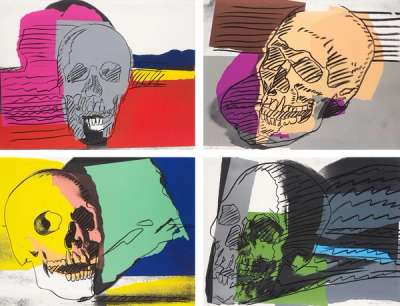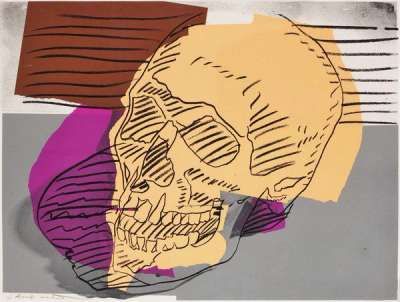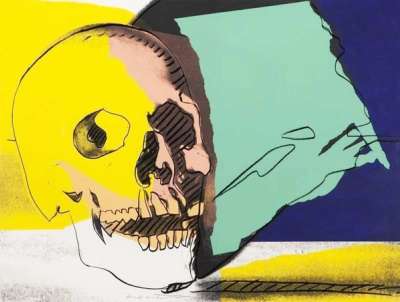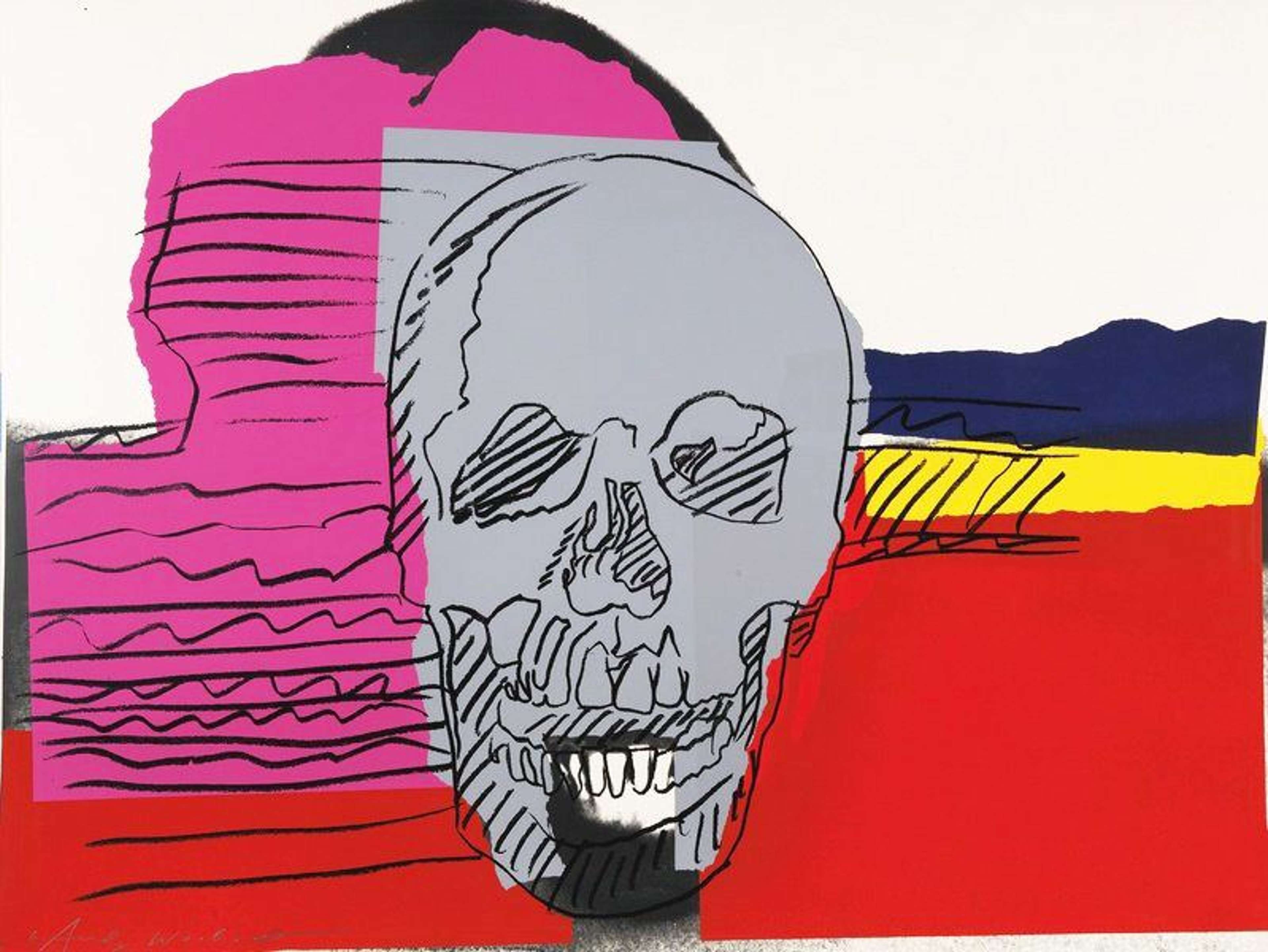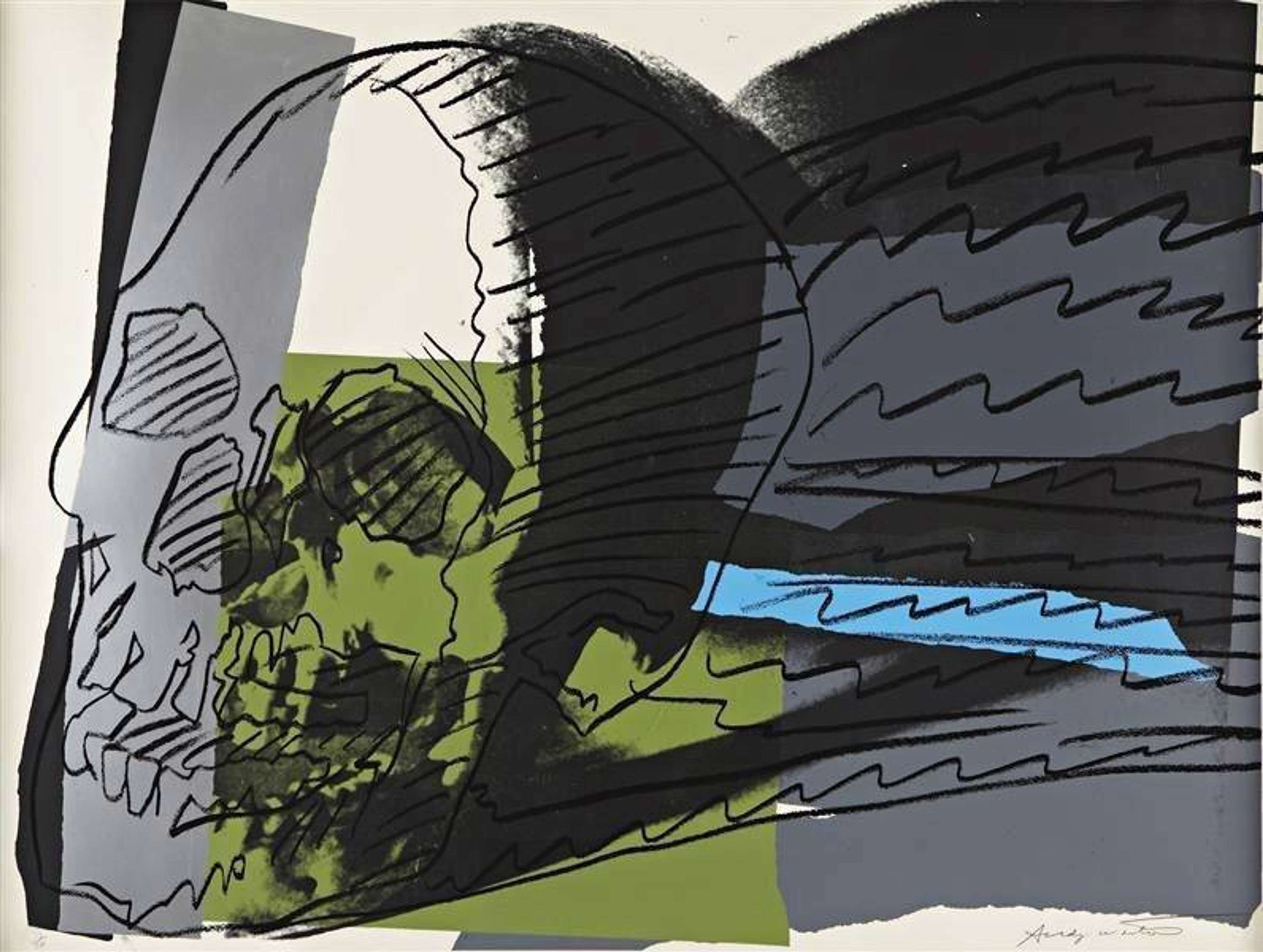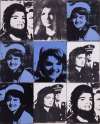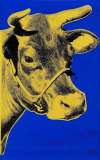Skulls
Andy Warhol’s Skulls (c.1976) is a still-life series depicting a skull, in the momento mori tradition. Having instructed assistants to vary the reference photos for the ten prints by adjusting the light, Warhol was interested in the play of shadows on the skull—heightening and flattening its deathly appearance.
Andy Warhol Skulls For sale
Skulls Value (5 Years)
Works from the Skulls series by Andy Warhol have a strong market value presence, with 40 auction appearances. Top performing works have achieved standout auction results, with peak hammer prices of £118110. Over the past 12 months, average values across the series have ranged from £15000 to £71667. The series shows an average annual growth rate of 8.61%.
Skulls Market value
Auction Results
| Artwork | Auction Date | Auction House | Return to Seller | Hammer Price | Buyer Paid |
|---|---|---|---|---|---|
 Skull (complete set) Andy Warhol Signed Print | 22 Oct 2025 | Phillips New York | £42,500 | £50,000 | £70,000 |
 Skull (F. & S. II.158) Andy Warhol Signed Print | 15 Nov 2023 | Christie's New York | £19,550 | £23,000 | £30,000 |
 Skull (F. & S. II.159) Andy Warhol Signed Print | 8 Feb 2023 | Nagel Auction | £13,600 | £16,000 | £20,000 |
 Skull (F. & S. II.160) Andy Warhol Signed Print | 16 Jul 2019 | Christie's New York | £14,450 | £17,000 | £22,000 |
 Skull (F. & S. II.157) Andy Warhol Signed Print | 16 Jul 2019 | Christie's New York | £14,450 | £17,000 | £22,000 |
Sell Your Art
with Us
with Us
Join Our Network of Collectors. Buy, Sell and Track Demand
Meaning & Analysis
Warhol's Skulls were made mostly in 1976 and were first exhibited in Cologne, produced as paintings, prints, drawings and self portraits. Warhol represented skulls in collages, prints, paintings, drawings, and even in self-portraits. The most recognisable images from this body of work are his still life prints, consisting of 10 screen prints based on photographs taken by Warhol’s assistant Robbie Cutrone. The photographs show a skull resting on a flat surface, taken from a slightly raised perspective. Under Warhol’s instruction, Cutrone adjusted the position of the light source in order to create a range of dramatic shadows over the skull’s features, casting the eye sockets into intense darkness. With the help of assistants in Warhol’s New York studio, the Factory, the artist was able to create multiple prints of the subject, varying in colour combinations and experimenting with the graphic possibilities of each repetition.
Warhol was one of the most influential figures in contemporary art, achieving notoriety through his interpretation of popular culture and consumerism in 20th century America. His work also calls into question the concept of the icon, most frequently explored in his representation of celebrities such as Marilyn Monroe, Muhammad Ali, and Elizabeth Taylor. However, the concept of the ‘iconic’ is explored on a more symbolic scale in his decision to depict the icon of the skull in an image which illustrates the multiplication of death. Warhol’s Skulls series has therefore been widely interpreted as an expression of the artist’s desire to evoke the ephemerality of the human condition.
Why did Andy Warhol Paint Skulls?
In each print, Warhol explores the use of a vibrant colour palette, creating a stark and surprising contrasts to the morbid subject matter with his playful representation. The artist also employs a more painterly aesthetic than in his earlier screen prints with brushstrokes to create surfaces of poetic movement, as exemplified in the expressive marks of Skull 157. This aesthetic signified a shift in Warhol’s career, standing in contrast to his 1960s prints of celebrity figures which demonstrate a more mechanical aesthetic typical of the Pop Art movement. In these earlier portraits, Warhol encapsulated the identity of well-known individuals through the characteristics that make them recognisable and pre-eminent in popular culture. The Skull series subverts this by presenting a subject devoid of any individuality, its repetition both magnifying and desensitising the ubiquitous human condition of mortality.
Some art historians have also linked this motif to the artist’s near-fatal shooting in 1968, suggesting that his Skulls series is a reflection upon this experience and his awareness of the inevitability of death. Nonetheless, in his book The Philosophy of Andy Warhol, Warhol wrote about death stating “I don’t believe in it because you’re not around to know that it’s happened. I can’t say anything about it because I’m not prepared for it.” His Skulls series therefore becomes ambiguous in its interpretation, a trait familiar to so much of Warhol’s most renowned work.
